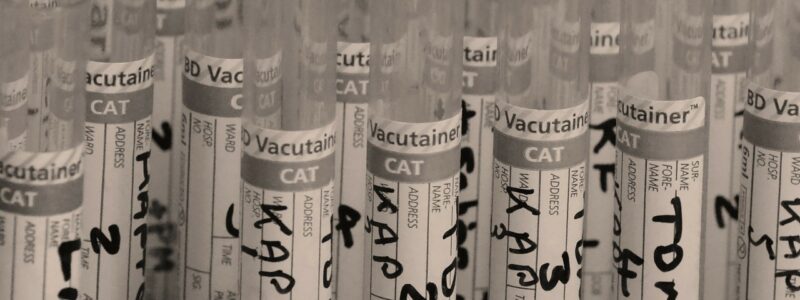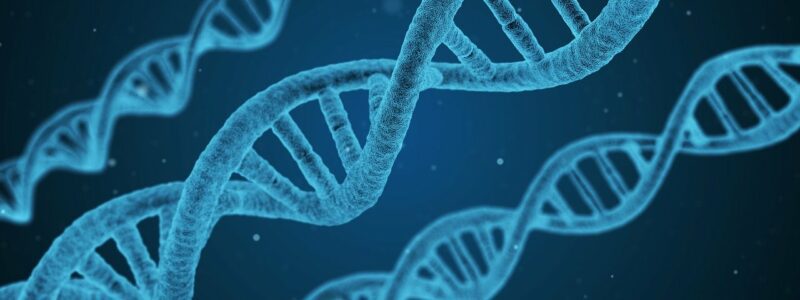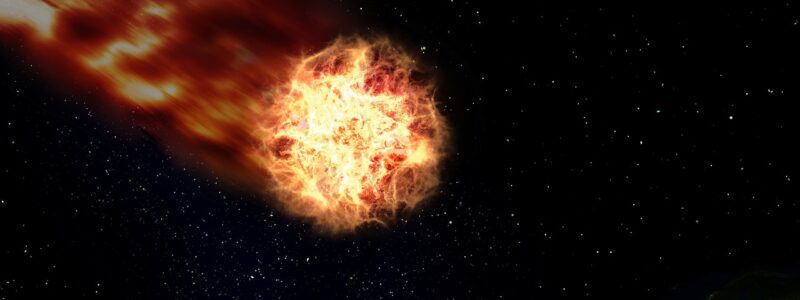The Cambrian Explosion
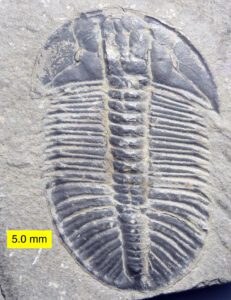
Trilobite
The Earth was without diverse animal life for about four billion years until the Cambrian Explosion occurred. In almost a moment in geological time, complex life exploded upon the Earth.
It was during this time that first life did appear including simple bacterial one-celled organisms and a few more complex multicellular species all not large enough to leave a visible fossil record.
The Cambrian explosion happened about 543 million years ago. All of the animal phyla either evolved or first appears at this time.
No matter where we look on Earth, there is no skeleton fossil records older than this. And then afterward, they are abundant in the fossil record. Our planet started off for billions of years without animals that could be seen without the unaided eye. In a few million years – the blink of a geologic eye – to a planet teeming with large animal life.
Trilobites are ancient animals that came forth during the early years of the Cambrian explosion. They appear very different from what we can see today, although they do bear a resemblance to the horseshoe crab and pill bugs. The Trilobite fossils range in size from microscopic to several feet long.
These animals have numerous spines, helmet-like heads, and several peculiar appearing eyes. In many parts of the world, the trilobites are the first animals seen. This would seem to show complex life appeared before predecessors.
The Cambrian Geologic Period
The Cambrian period was defined by Adan Sedgewick by a thick layer of sedimentary rock originally located in Wales. This rock was shown to contain large numbers of varied animal species.
The earliest portions of Cambrian era rock is defined as those layers in which the first trilobites can be seen. These are now known to be present all over the world – not just in Wales.
Darwin and the Cambrian Explosion
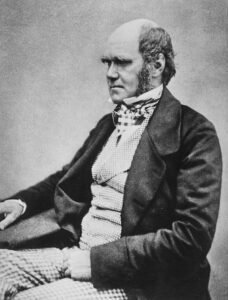
By Charles_Darwin_seated.jpg: Henry Maull (1829–1914) and John Fox (1832–1907) (Maull & Fox) [2]derivative work: Beao – Charles_Darwin_seated.jpg, Public Domain, Link
If Darwin was correct, then there should be a long period of gradual evolutionary change with simpler precursors leading to more and more complicated varieties until the vertebral and skeletal structure of the Cambrian explosion were noted.
Darwin was never able to satisfactorily refute this criticism of his history; instead, he talked about the imperfections of the fossil record. It was his belief that the passage of time would allow the discovery or more primitive fossils where this gradual change did occur.
Modern dating techniques date the Precambrian / Cambrian boundary as being about 543 million years ago. It was during this time frame when very tiny animals living without skeletons developed into the vast complexity of the animals we see today.
The simple bacteria we all know today came into being about 4 billion years ago and has remained essentially unchanged since then. The bacteria cells are prokaryotic in their cellular structure.
This huge transition occurred in the relative blink of an eye – about 12 million years.
The Eukaryotic Cell
It is difficult to convey the immensity of this change. There were three major jumps that occurred during this time; These are the formation of the first eukaryotic cell (modern animal cell), the first multicellular organisms, and the veritable explosion of life.
The eukaryotic cell is the basic requirement for all complex multicellular life including plants, fungi, protozoans, snakes, dogs, cats, and humans. We are all made of cells with the same basic structure.
The eukaryotic cell is fundamentally different from the prokaryotic cell. Evolutionary biology has been largely unable to account for the arrival of this new cellular structure. It is as different from the prokaryotic cell as humans are from a sponge.
There are no intermediate cells seen in the fossil records; this fundamentally different form of life just appears.
Differences between Eukaryotic and Prokaryotic cells
- Eukaryotes can perform sexual reproduction while prokaryotic primarily reproduce through asexual means
- They have flexible cell membranes which allow them to engulf good particles through a process called phagocytosis
- There is an internal structure that is fundamentally different from prokaryotic; they are at least 10,000 times larger than a typical prokaryotic cell; they have an internal structure and salt balance regulating systems which are far more advanced than the prokaryotic
- Eukaryotes have much more DNA than a prokaryotic cell – usually about 1000 times as much; the DNA in eukaryote cells is stored in strands or chromosomes and there are usually two copies in each cell.
- Eukaryotes have enclosed organs within them including the mitochondria (producing energy) and chloroplasts (with chlorophyll to produce energy in plants);
- In eukaryotes, DNA is contained within a membrane-bound organelle – the nucleus.
First Multicellular Organisms
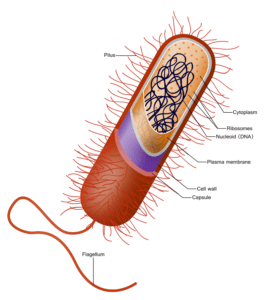
By This vector image is completely made by Ali Zifan – Own work; used information from Biology 10e Textbook (chapter 4, Pg: 63) by: Peter Raven, Kenneth Mason, Jonathan Losos, Susan Singer · McGraw-Hill Education., CC BY-SA 4.0, Link
The first multicellular organisms were likely formed from prokaryotic cells. Cellular slime moles are multicellular for example.
However, the development of the prokaryotic framework did not develop any further and appears to be an evolutionary dead end. They have existed on Earth for billions of years without any significant change or differentiation.
The first change from a simple eukaryotic cell to multicellular organisms seems to have happened rapidly. The cell wall was she from the cell allowing them to stick to each other and communicate among themselves.
Cell differentiation also occurred which seems not to have happened with the prokaryotic multicellular slime mold. This allows the cells to assume a different function. This might be the GI tract for absorption, skin, heart and nerve cells, etc.
The cellular structure derives from different tissue type plans called “germ layers.” There are a few organisms that have only two germ cell layers (ectoderm and endoderm). These are the cnidarians which all live in water and generally seawater. These include corals and sea anemones.
Most multicellular animals have three types (ectoderm, endoderm, and mesoderm). Also, the multicellular animals had to develop a means of reproduction, movement, nutrition, and defense.
Eukaryotic Organisms and the Cambrian Explosion
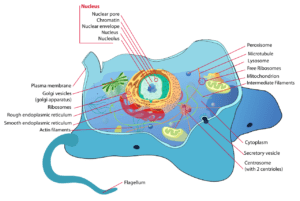
By LadyofHats (Mariana Ruiz) – Own work using Adobe Illustrator. Image renamed from Image:Animal cell structure.svg, Public Domain, Link
The most primitive of eukaryotes are the sponges. They have different kinds of cells that perform different tasks but very little in the way of communication among cells. There is no nervous system or intestinal cavity.
New organisms came into existence during the Cambrian explosion with 50-75 different new phyla or large groupings of animals. These animals suddenly appeared without any precursors or intermediate organisms.
Creation was turned off after a tremendous creation even – never to be turned on in the same way again.
Problems Proposed by the Cambrian Explosion
It is difficult to overstate the problems the Cambrian explosion provides for conventional Darwinian evolution.
Whole new organisms with vastly new metabolic pathways, checkpoints, and structure suddenly appeared out of nowhere.
Some of these problems include,
- There are no intermediate forms demonstrating how a sponge or mollusk might differentiate into a fish, for example. (The problem of intermediate forms is present for all of the evolutionary theory not just for the Cambrian explosion);
- It is difficult to explain how evolution was “turned on” for a few million years only to be “turned off” again
- Exactly how macroevolution occurs has yet to be explained. It is one thing to propose a new evolutionary pathway with climate change or environmental stress, but another to explain exactly how this occurs using biological mechanisms.
Atmospheric Oxygen
Most of the proposed mechanisms for the Cambrian Explosion have to do with radical changes in the climate. One of the biggest changes was atmospheric oxygen.
The current oxygen-rich environment on Earth is a rather recent occurrence. Most of the Earth’s history was spent with an oxygen-poor environment that would have been inadequate for the energy-intensive needs of modern organisms. Modern animals use large amounts of oxygen to walk across land and live their lives.
Humans use about 250 milliliters of oxygen every minute at rest and much more with exertion. A poor atmosphere environment would not enable people to work, walk, or do usual activities of daily living.
Cause of Atmospheric Oxygen Increase
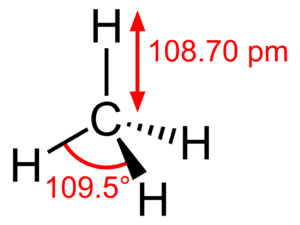
y Jynto – Own work, based on File:Methane-CRC-MW-dimensions-2D.png, Public Domain, Link
One of the things bacteria did from the time they first appear on Earth is to produce oxygen. Cyanobacteria are those which make oxygen as a waste product – but only in minimal amounts.
The Earth’s crust absorbed most of the oxygen which was initially produced on Earth. These minerals soaked up vast amounts of oxygen through billions of years. Tectonic activity continually produced new portions of the Earth’s mantle to suck up vast quantities of oxygen.
The tectonic activity would then submerge these oxygen-rich rocks deep into the Earth taking it out of the atmosphere. Gradually, the ability of the Earth’s mantle to absorb oxygen was exhausted and atmospheric oxygen gradually increased.
Another important aspect of oxygen production was the removal of methane from the atmosphere. Methane – also known as swamp gas – is produced by decaying material among other causes. Methane is a greenhouse gas that can trap heat in the Earth’s atmosphere.
As oxygen quantities increased and methane quantities decreased, the earth gradually cooled and even had several periods of glaciation. The last glaciation period occurred just before the Cambrian explosion.
It is assumed that the mechanism for the Cambrian explosion was the production of oxygen and the lowering of the Earth’s temperature. However, how these changes translate into changing organ structure, function and cellular differentiation remains speculative at best.
Nutrient Availability
There is good evidence for an increase in nutrients just before the Cambrian explosion. Evolutionary scientists propose the increase in available nutrients placed a “pressure” on the production of more life that somehow increased evolution.
The precise mechanism whereby this occurs is open to question. The problem of producing completely new and different life forms is not explained by adding more oxygen and nutrients to the environment.
Other scientists note the opposite would seem to be expected. Additional nutrients and oxygen-producing a more favorable environment for life would enhance the survival of weaker organisms which would crowd out living space for more evolved organisms.
Cambrian Ecosystems
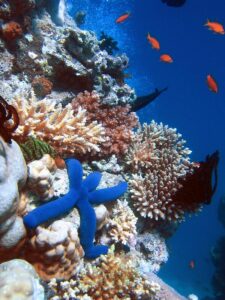
By Copyright (c) 2004 Richard Ling, CC BY-SA 3.0, Link
The sudden appearance of a completely new, complex ecosystem also characterizes the Cambrian explosion.
These ecosystems had proper food, proper predator and prey relationships, and high complex interactions among animals.
Not only did the Cambrian explosion produce tens of new phyla (which has never since been duplicated), it also produces new ecosystems. These ecosystems seemed to be made for the animals that would be occupying them.
Cambrian Cessation
The next problem to explain is why the Cambrian explosion stopped. Nutrients and oxygen continued to be available during the cessation period.
Two mechanisms have been proposed for the Cambrian cessation. These include
- The destruction of a large portion of currently existing life by more evolved organisms opened up new niches for new life; this destruction might also have been accelerated by the recent “snowball Earth” when Earth was covered in ice and snow,
- The sudden development of an environment that was very favorable to life might produce evolutionary pressure toward new and different animals.
Scientists are still not able to explain the cellular mechanism as to how increased nutrients might cause new organisms to develop. This is a particularly difficult problem because life scientists with all their modern equipment are unable to produce new life forms through countless generations of evolutionary pressure.
Lack of New Biological Explosions
The usual explanation for the Cambrian explosion is environmental pressure. This pressure is from increased oxygen and nutrient levels, and destruction of many competing life forms during the previous Ice Age.
This explanation might predict another explosion of new organisms at the time of a catastrophic extinction produced during the Permo-Triassic period about 250 million years ago. This extinction eliminated about 90% of life on earth.
No new phyla appeared after this mass extinction which would be expected if the Cambrian explosion explanation were true.
Conclusion
The Cambrian Explosion is a unique time in biological history when vastly new life forms and ecosystems “exploded” into existence. This happened about 543 million years ago just after the most recent Ice Age.
These new organisms are fundamentally different from those preceding them. The cellular structures are different (eukaryotic), the environment was different, and new metabolic pathways, enzymes, organ systems, and vastly increased sophistication and organization.
These changes suggest the intervention of an Intelligent Designer who intervened in biologic history.
Abductive reasoning suggests the mechanism with the greatest and simplest explanatory power is most likely the correct one.

